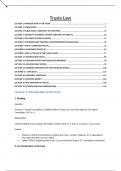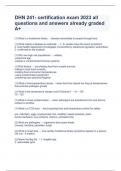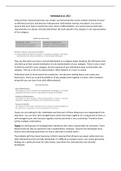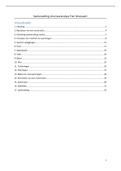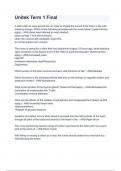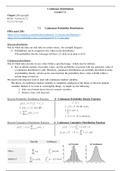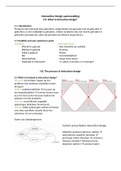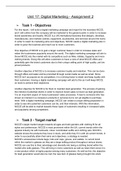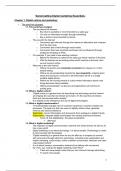LECTURE 1: INTRODUCTION TO THE TRUST.................................................................................................... 1
LECTURE 2: FORMALITIES.............................................................................................................................. 7
LECTURE 3: PUBLIC POLICY; CERTAINTY OF INTENTION................................................................................15
LECTURE 4: CERTAINTY OF SUBJECT MATTER; CERTAINTY OF OBJECTS.........................................................22
LECTURE 5: THE CONSTITUTION OF TRUSTS................................................................................................. 31
LECTURE 6: THE BENEFICIARY PRINCIPLE; UNINCORPORATED ASSOCIATIONS..............................................36
LECTURES 7 AND 8: CHARITABLE TRUSTS..................................................................................................... 51
LECTURES 8: CHARITABLE TRUSTS (II).......................................................................................................... 67
LECTURES 9 AND 10: TRUSTS OF THE FAMILY HOME....................................................................................77
LECTURE 11: THE RESULTING TRUST............................................................................................................ 84
LECTURE 12: FIDUCIARY DUTIES AND ASSOCIATED REMEDIES......................................................................90
LECTURE 13: NON-FIDUCIARY DUTIES.......................................................................................................... 99
LECTURE 14: REMEDIES FOR BREACH OF NON-FIDUCIARY DUTIES..............................................................108
LECTURES 15 - CANCELLED......................................................................................................................... 115
LECTURE 16: DISHONEST ASSISTANCE........................................................................................................ 115
LECTURE 17: KNOWING RECEIPT................................................................................................................ 122
LECTURE 18: THE VARIATION OF TRUSTS................................................................................................... 128
LECTURE 19: REVISION AND EXAM PREPARATION.....................................................................................134
Lecture 1: Introduction to the trust
1. Reading
Essential
• Garton J, Probert R and Bean G (2020) Moffat’s Trusts Law: Text and Materials 7th edition.
Cambridge: CUP, ch. 1.
Alternative:
• Watt G (2020) Trusts & Equity 9th edition. Oxford: OUP, ch. 1 from p. 14 and ch. 2, pp. 45-65.
Further
Hudson A (2014) Great Debates in Equity and Trusts. London: Palgrave, ch. 2 (uploaded in
the materials folder on Learn Ultra).
Jaffey P (2015) ‘Explaining the Trust’ 131 Law Quarterly Review, 377 (available via Westlaw).
2. An introduction to the trust
,Ownership vs. property
A key to understanding the trust is to realise that when we talk about the ownership of things, we
imply a normative aspect, or an ‘ought.’ Invoking ownership may therefore invite controversy, to
which common law and equity respond differently, each assigning property rights on the basis of
their own rules. The trust is a central means by which equity assigns property rights.
Property as a whole is the body of law that answers to the question of ownership. This, however, is
not necessarily a question of social justice (although changes to legal and equitable rules will in part
be driven by public policy). Both common law and equity are primarily concerned with private rights
to things as they arise from dealings between parties – things that are capable of being controlled at
the exclusion of others, and which we might therefore call ‘property.’ As we will see, equity’s
function is to ‘temper’ the injustice that results from the unconscionable reliance on one’s legal
rights.
E.g. buying something from a shop (two people have contributed different amounts to the price) but
by law the person who makes the contract with the shopkeeper owns the product but in equity they
both own it as their property rights will be held in proportion to their contribution to the purchase
price.
The elements of a trust
The persons and things involved in a trust
arrangement are:
• The settlor
o Holds absolute title to the property.
o Transfers the property to the trustee to hold on trust for another person, or declares him/herself a
trustee to hold property on trust for another person.
o Is called ‘settlor’ when transferring property in his/her lifetime and ‘testator’ when transferring
property through his/her will.
o Is not part of the trust arrangement (unlesss he has declared him/herself a trustee or is a/the
beneficiary).
Testator – death of settlor (remaining rights in the trust)
The trust property
o Alsocalledtrustassets,usuallymakingupatrustfund.
The trust instrument
o Specifies the terms on which the property is to be held.
o Neither trustee nor beneficiary is involved in drawing up the trust instrument, which is the result
of a unilateral act by the settlor.
• The trustee
o Receives the legal title of the property from the settlor to hold on trust for another person or for
another person and him/herself.
,o May be the same person as the settlor, if the latter has declared him/herself as a trustee.
o May do anything with the property that is permissible at common law.
But:
o Is restricted as to dealing with the property by the trust instrument and the rules of equity.
• The beneficiary (cestui que trust)
o Receives the beneficial title to the trust property as specified by the trust
instrument.
o Maybethesamepersonasthesettlor.
o Oneormore(butnotall)ofthebeneficiariesmayalsoactastrustees.
What assets can be held on trust?
Any asset that is capable of property rights can also be
held on trust. This includes personal or real property;
land, chattels or choses in action. For example, a debt
such as bank money or an interest such as an interest
from the proceeds from an insurance policy can be held
on trust.
Self-declaration: Settlor declares him/himself trustee
(owner at law)
The definition of a trust
Here are two definitions:
“A trust exists when a particular fund of property is held by a legal owner ‘on trust’ for a cestui que
trust or beneficiary, which means roughly the following: the legal owner has all the legal powers to
deal with the trust property, but he must do so entirely for the benefit of the cestui, who is said to
have the benefit or enjoyment of the property.” - Penner JE (1997) The Idea of Property in Law. Oxford:
OUP, pp. 133-134.
“A trust is a situation in which property is vested in someone (a trustee), who is under legally
recognized obligations, at least some of which are of a proprietary kind, to handle it in a certain way,
and to the exclusion of any personal interest. These obligations may arise either by conscious
creation by the previous owner of the property (the settlor), or because some other legally significant
circumstances are present.” - Gardner S (2011) An Introduction to the Law of Trusts 3rd edition. Oxford:
OUP, p. 2.
Ownership – Legal v Equitable
Historically: Courts of Common Law (legal ownership) v Courts of Equity (equitable
ownership)
Recent Times: Legal and equitable ownership is applied by the same court but there remains
a conceptual difference.
, Fusion – the same courts use
common and equitable rules e.g.,
remedies of injunction and specific
performance. Remedies now
available which were before.
Enforced legal logic. Ensure that
justice is met in all cases.
The key distinctions involved
(a) The distinction between legal and equitable ownership
In order to understand equitable ownership, you need to know a few things about equity:
“Equity now is that body of rules administered by our English courts of justice which, were it
not for the operation of the Judicature Acts, would be administered only by those courts
3
which would be known as Courts of Equity.”
th
Equity evolved in the 12 century from the King’s authority (or ‘prerogative’) to issue writs
through his Chancellor (out of ‘Chancery’) to address unjust (or unconscionable) judgements
of his courts.
One common form of relief was an injunction granted by the Court of Chancery against the
enforcement of a common law judgement, with the threat of imprisonment for breaching
the injunction.
The Chancellor (the ‘keeper of the king’s conscience’) was usually a cleric (bishop), who
exercised a broad discretion and made decisions according to his conscience on the merits of
the individual case.
Equity was said to operate in personam, i.e. against the conscience of the defendant.
Equity offered flexibility on the basis of ‘maxims’ or broad principles rather than detailed
rules.
It eventually developed into a separate body of law adjudicated at the Court of Chancery at
Westminster Hall.
There was a rivalry between the Court of Chancery and the common law courts, between
the Chancellor and the Lord Chief Justice (The Earl of Oxford’s Case (1615) 1 Ch Rep 1). This
was ultimately settled in 1616 by King James, who sided with Chancery, who was said to
declare that ‘where equity and law conflict, equity prevails.’
3
Maitland FW (1909) Equity, also, the Forms of Action at Common Law: Two Courses of Lectures.
Cambridge: CUP, p. 2.
However, equity had problems with consistency; said to vary ‘according to the length of the
Chancellor’s foot.’
th
Also, by the 19 century Chancery was hopelessly overstretched and unable to deal with its
case load.
The Judicature Acts 1873-75 established concurrent jurisdiction:
o S.25(11) Supreme Court of Judicature Act 1873 (also see s.49(1) Supreme Court Act 1981):
“In all matters not hereinbefore particularly mentioned, in which there is any conflict, or
variance, between the Rules of Equity and the Rules of Common Law with reference to the
same matter, the Rules of Equity will apply.”


